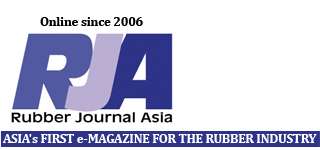 The California Assembly Bill 1239, introduced in February 2015, sees opposition from the Tire Industry Association (TIA) and Rubber Manufacturers Association (RMA).
The California Assembly Bill 1239, introduced in February 2015, sees opposition from the Tire Industry Association (TIA) and Rubber Manufacturers Association (RMA).
AB 1239 will maintain the current US$1.75 fee on every new tyre sold in California (US$0.75 of this goes to the Air Pollution Control Fund and US$5 million per year goes to the California Conservation Corps). But it will also create a second tyre fee, not exceedingUS$1 per new tyre, payable by California tyre sellers to provide more funding to California’s scrap tyre management program. The new fee will allow the California Department of Resources Recovery and Recycling (CalRecycle) to spend additional funds on a new incentive payment program to scrap tyre end-users.
According to an analysis of the bill by the California Senate Committee on Environmental Quality, AB 1239 requires CalRecycle to adopt a five-year plan, to be updated every two years, that establishes goals and priorities for the waste tyre program. The bill requires CalRecycle to allocate at least US$20 million annually for tyre recycling incentives between July 1, 2018 and January 1, 2024. After January 1, 2024, CalRecycle will allocate funding to the incentive program based on available agency funds, the analysis said.
California’s scrap tyre management program already has a surplus of more than US$60 million and CalRecycle currently receives more than US$30 million annually from the proceeds of the current scrap tyre fee, according to TIA.
“TIA believes that a primary goal of California’s scrap tire program should be to phase out government payments to end users or other market participants and move toward an economically sustainable, free-market program for scrap tire end use markets,” they said.
TIA and RMA proposed the following amendments to AB 1239:
- Clarify language that no new tyre fee can be initiated until current surplus tyre funds are substantially drawn down.
- Sunset the new tyre regulatory fee by January 1, 2024.
- Require that CalRecycle collect and make public information from recipients of a new incentive payment program, to show whether the uses of tyre material are advantageous compared to alternatives, whether the tyre material is cost-effective compared to non-subsidized/incentivized alternatives, and technical performance evaluations of the tyre material.
- Require that CalRecycle conduct an independent economic study to examine, among other topics, each scrap tyre market and provide specific recommendations on how to structure any incentive payments to increase the consumption of eligible markets.
Only the sunset was addressed, according to them. “We are unaware of any other state having such a substantial surplus in its scrap tyre program funding or such a massive scrap tyre management bureaucracy. Unfortunately, handing out ever larger subsidies has proven to do little to advance environmentally, socially and economically sustainable scrap tyre markets,” they said.“Therefore we remain opposed to California Assembly Bill 1239 unless amended.”
AB 1239 passed the California Assembly by a 50-29 vote on June 2, 2015. It was approved by the Senate Committee on Environmental Quality on June 30, 2016, and referred to the Senate Appropriations Committee.
